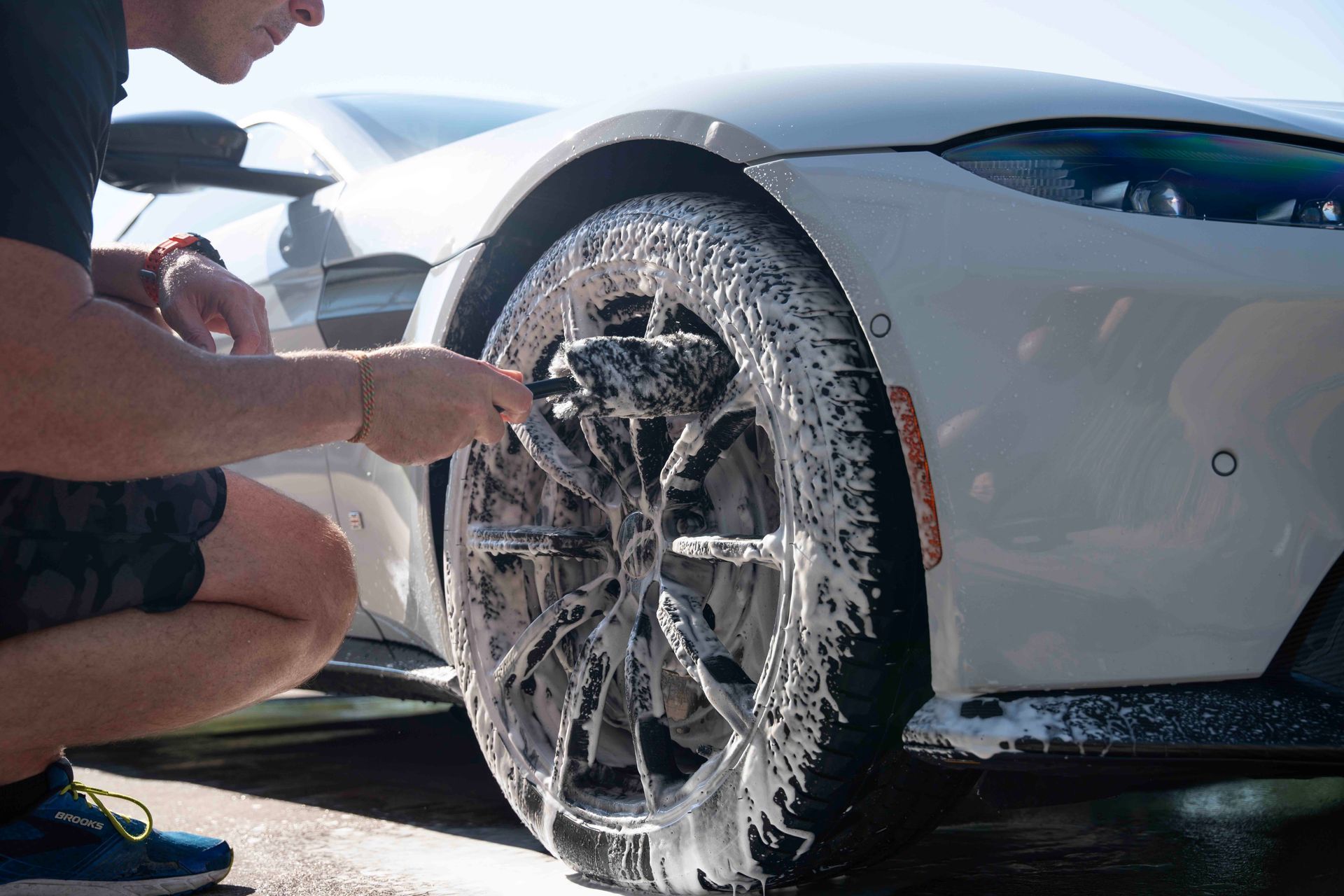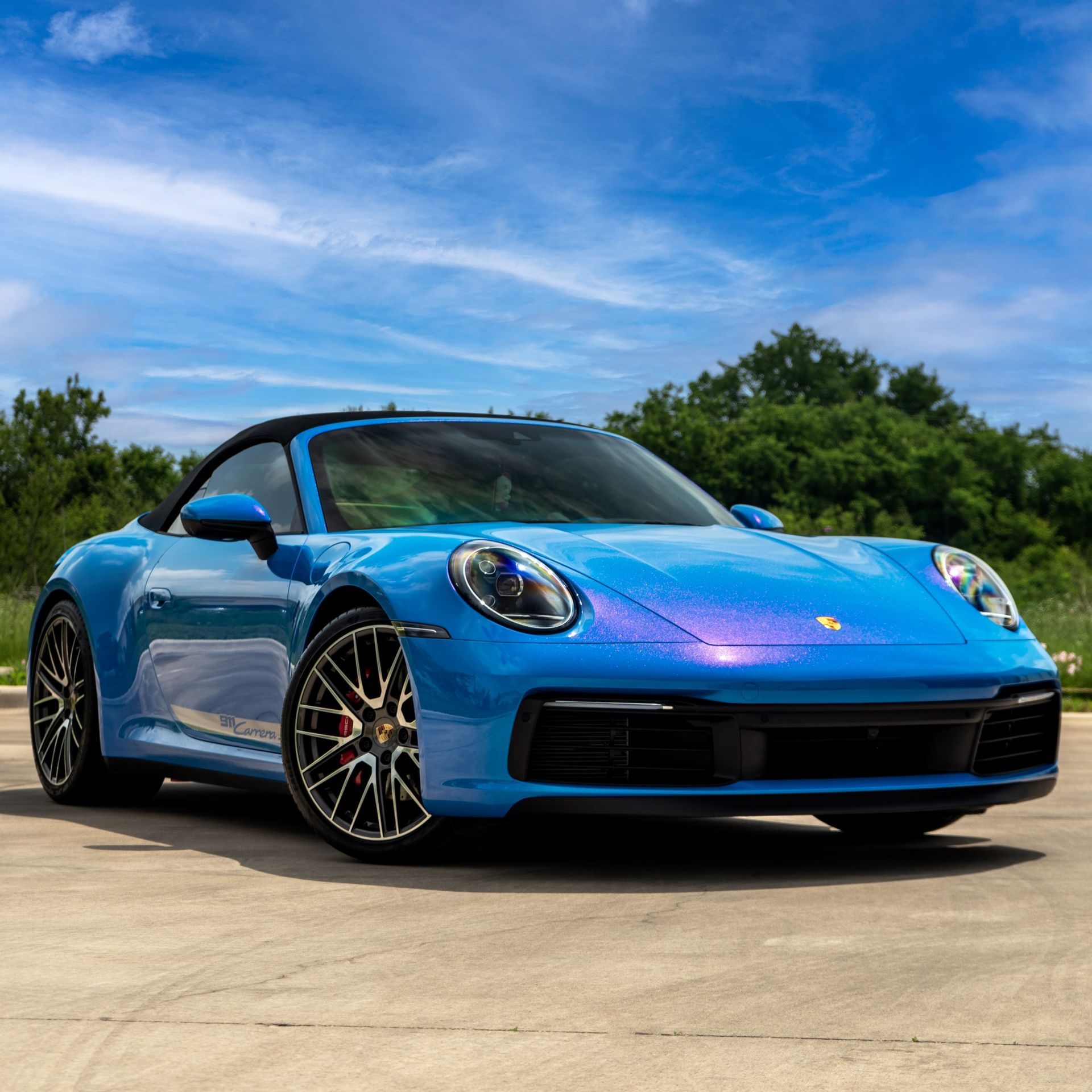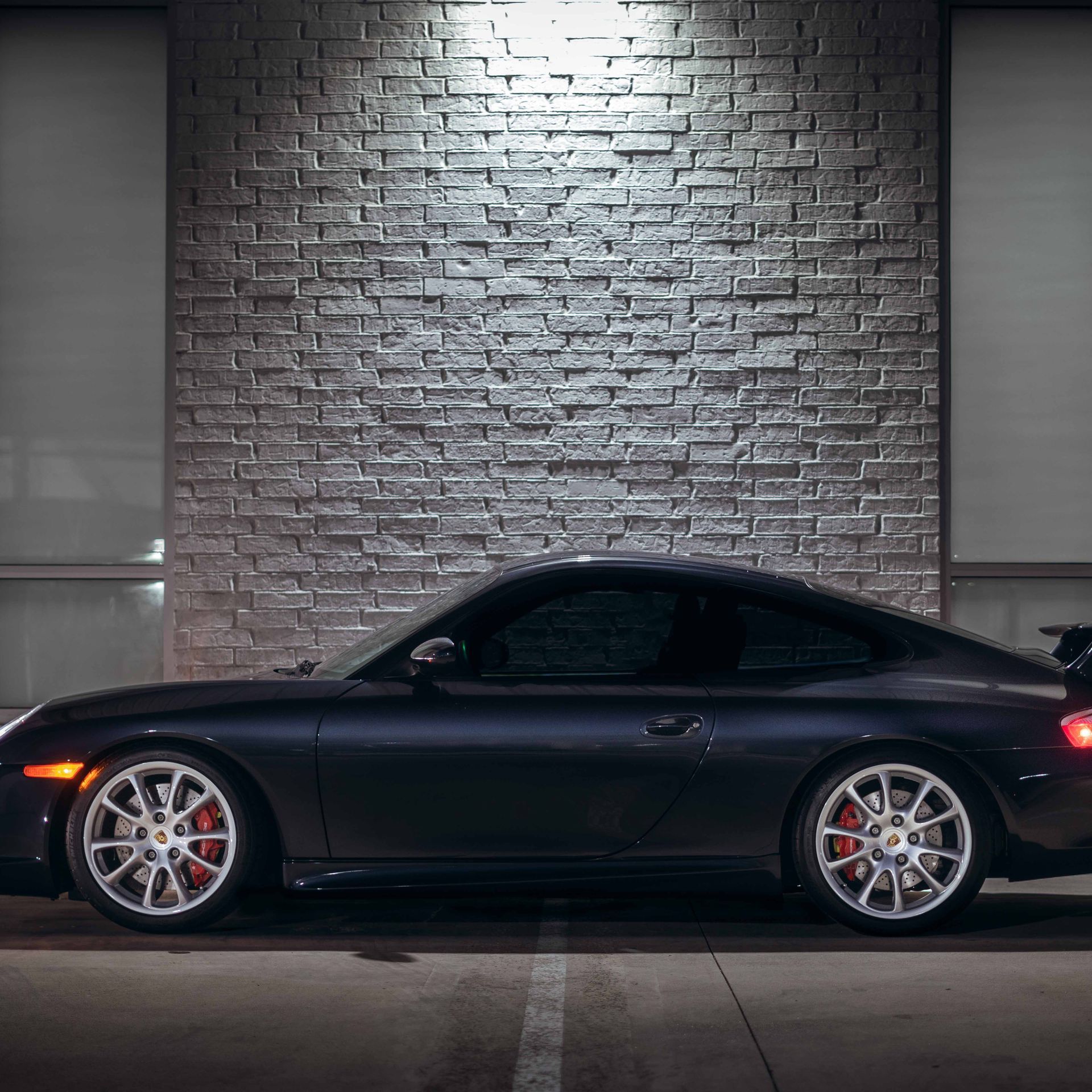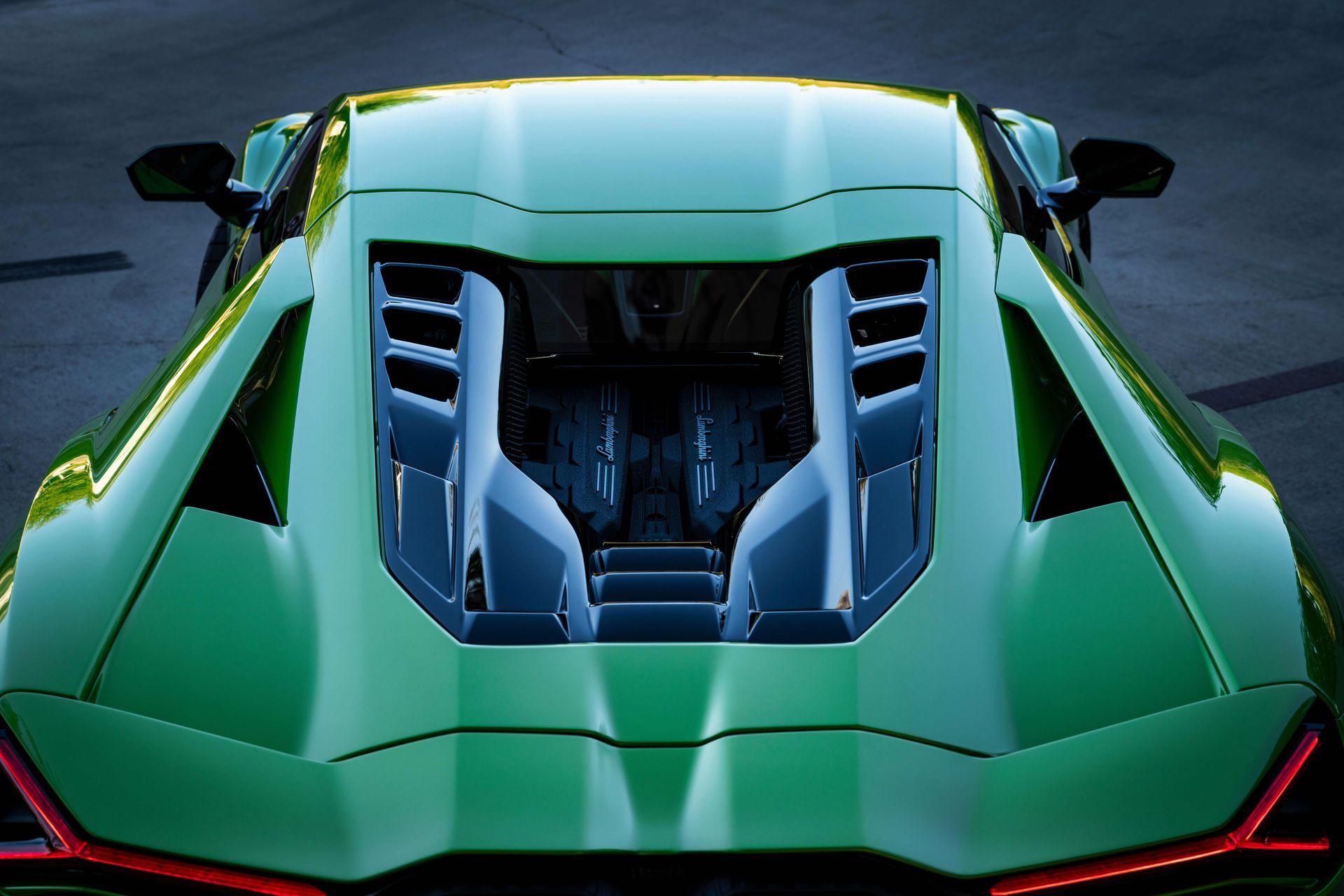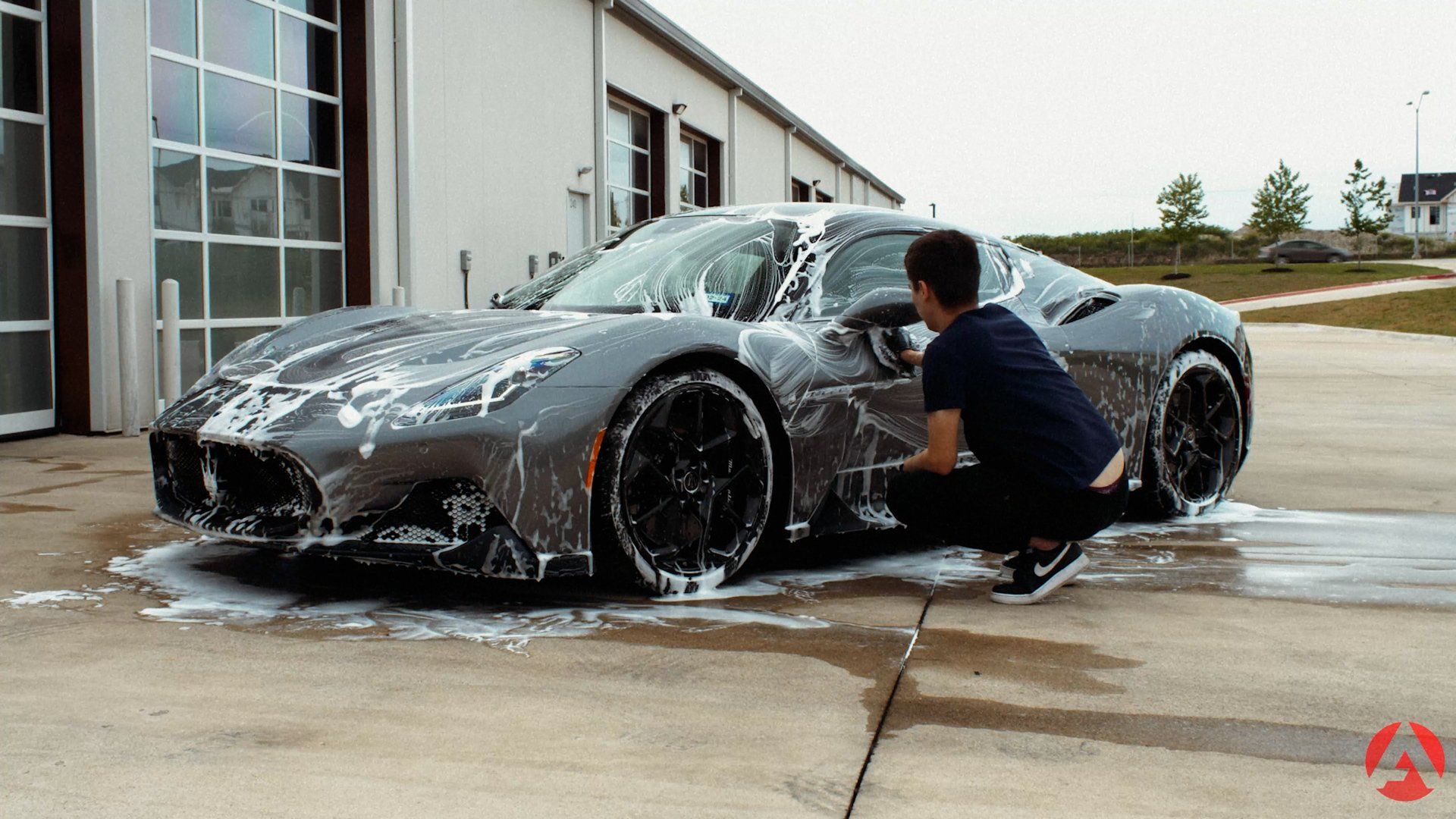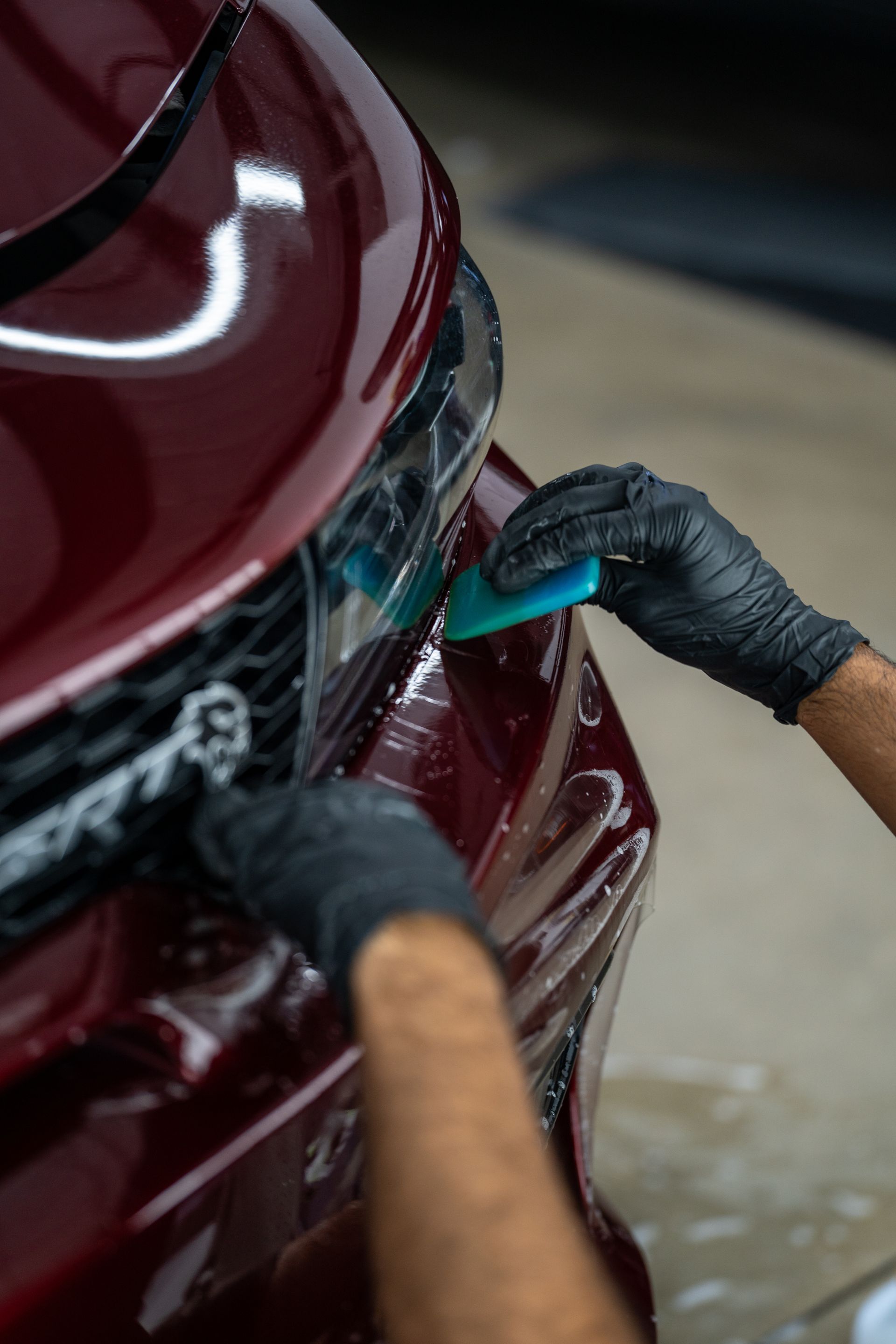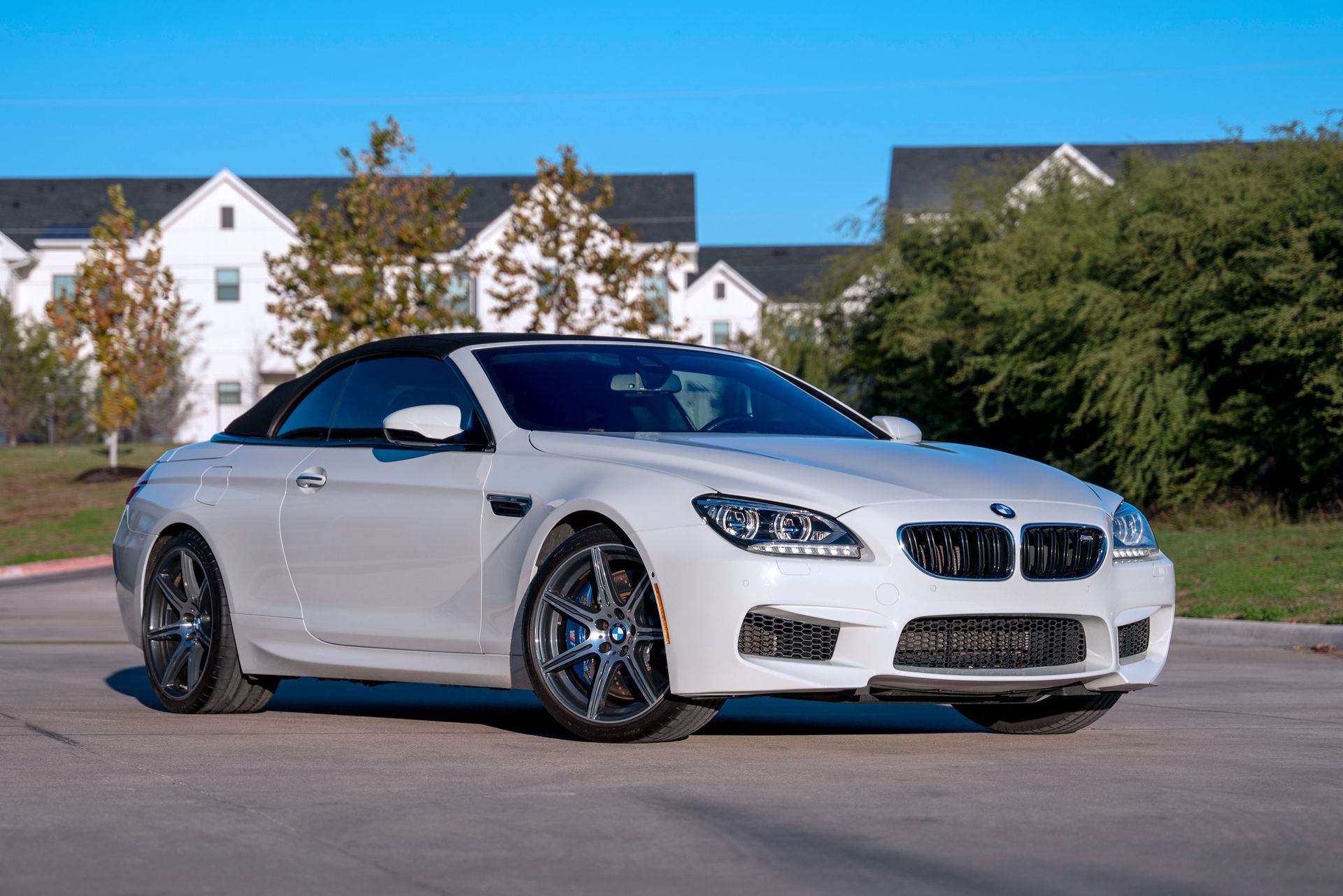Ceramic Coating vs. PPF: Which is Best for Your Car?
CALL (512) 296-0183
GET A QUOTE TODAY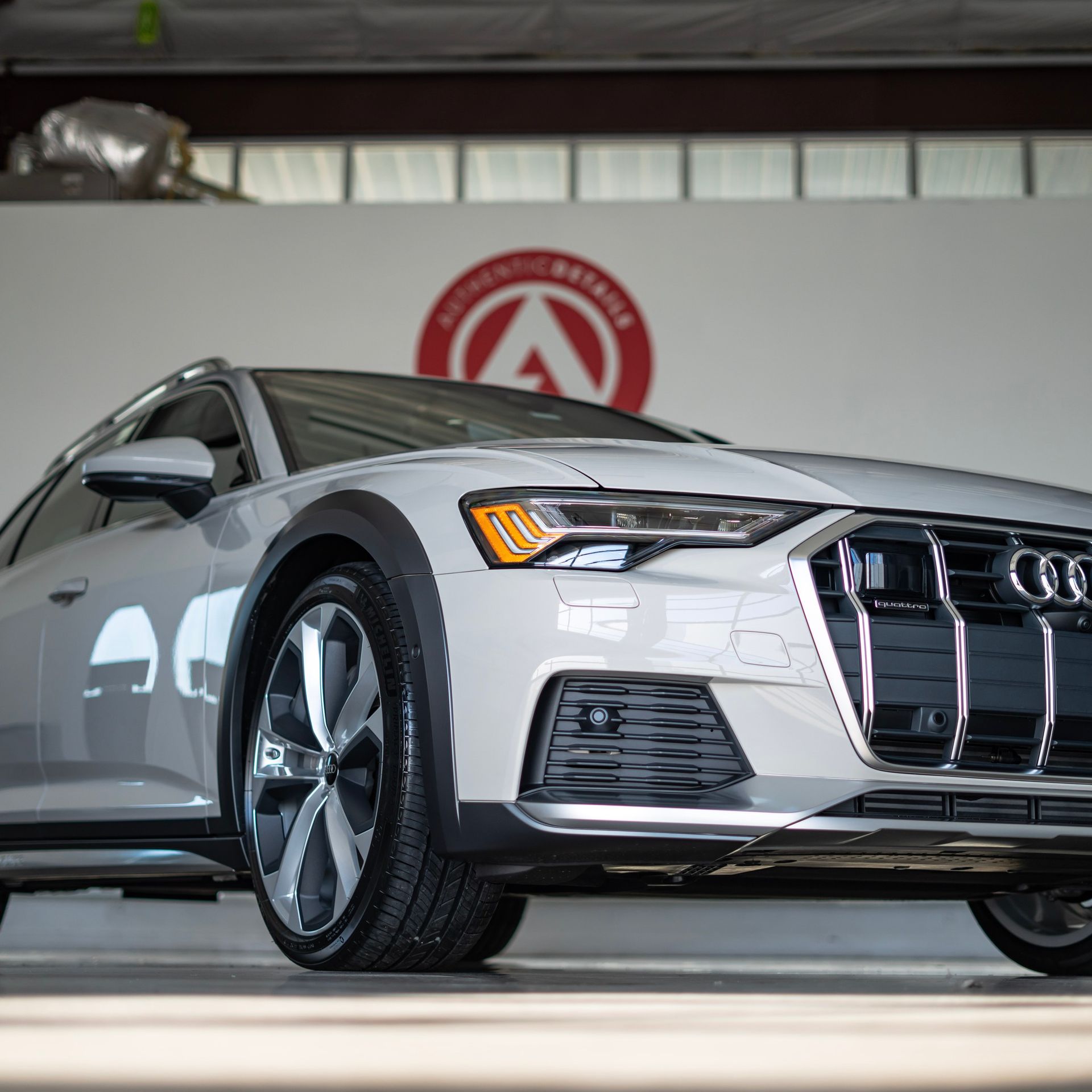
Ceramic coatings and paint protection films aim to protect a vehicle's paint job. However, the main difference lies in their application methods and protective properties. The paint protection film is a transparent urethane material that is thicker than ceramic coatings and can self-heal.
On the other hand, ceramic coating is a liquid polymer that bonds with the factory paint to offer added protection against UV rays, oxidation, water spots, and other types of damage. In short, each has its own unique benefits, and it's up to the car owner to decide which option is best for them based on their unique needs and preferences.
Understanding Ceramic Coating
When it comes to protecting your car's paint from environmental hazards, ceramic coatings have become a popular choice among car owners.
Ceramic coating is a liquid polymer that chemically bonds with the factory paint of a vehicle, creating a protective layer that lasts longer than traditional waxes and sealants. But how does it work?
Think of the ceramic coating as a second skin for your car. Just like sunscreen protects your skin from harmful sun rays, the ceramic coating protects your car from UV rays, bird droppings, tree sap, and other damaging pollutants that can cause discoloration, fading, oxidation, and even rust. It is a long-term solution that does not require frequent reapplication compared to traditional wax or sealant.
Unlike wax or sealant, which sits on top of the paint, the ceramic coating creates a chemical bond with the paint, forming a hydrophobic (water-repellent) surface that allows water and dirt to slide off easily. This means less maintenance time and effort for you to keep your vehicle clean while ensuring optimal protection against contaminants.
To put it simply: the ceramic coating is like having invisible armor for your car's paint job. With its durability and longevity, it's no wonder why many car enthusiasts swear by this advanced protection technology.
However, despite its many benefits, there are some limitations to consider when considering ceramic coating. While it can provide excellent protection against chemicals and UV damage, it cannot prevent rock chips or scratches caused by road debris or accidental impact. Some manufacturers advertise their products as scratch-resistant or self-healing, but these claims should be taken with caution.
Grasping Paint Protection Film
If you're seeking a dependable way to preserve your car's paintwork against scratches, dents, and other damage, try paint protection film (PPF). PPF is a clear, lightweight urethane film that may be applied directly to the painted external surfaces of your vehicle. It's built for high impact resistance, so it can withstand damage from flying debris like rocks, gravel, or other road hazards.
One of the major advantages of PPF over traditional paint protection systems is its ability to self-heal. PPF is made using a special chemical formula that permits it to mend itself when it is scratched or nicked. This implies that even slight abrasions will not mar the appearance of your vehicle. In contrast, if you used a ceramic coating alone, any damage would necessitate reapplying the coating.
Imagine driving your new sports car and discovering that you've picked up some little rocks and pebbles along the route. With PPF installed, you can rest assured that this debris will not harm your vehicle's gorgeous exterior.
Another advantage of PPF is that it provides an undetectable layer of protection without significantly affecting the appearance of your vehicle. When properly fitted, it creates an almost smooth finish, so no one will notice it's there.
Comparative Analysis: Ceramic Coating and Paint Protection Film
Car enthusiasts put a lot of thought into protecting their vehicles' paint jobs. Many swear by ceramic coatings, which have become somewhat of a buzzword in recent years. Others choose paint protection film, a clear urethane compound that can be applied to any vehicle's outside painted surface. Each has its advantages and drawbacks, but which one is better?
Ceramic coatings and paint protection films are both effective ways to protect a car's paint job from scratches, chips, and environmental hazards. However, they differ in the way they provide protection and additional benefits.
Ceramic coatings bond with the vehicle's factory paint and create a layer of protection that is resistant to oxidation, UV rays, dirt, acid rain, and bug splatters. They also offer hydrophobic properties that make water bead up and roll off the surface easily. This means less time spent washing your car and less damage from harsh chemicals and minerals in the water.
On the other hand, paint protection film is thicker than ceramic coatings and offers better impact resistance. It can prevent rock chips, scratches caused by small debris on the road, bird droppings, etc. It self-heals with heat, so that minor scratches disappear within minutes or hours.
One significant advantage of ceramic coatings over paint protection films is their longevity. Paint protection films typically last five to seven years before needing replacement or renovation. In contrast, ceramic coatings are more durable because they bond chemically with the vehicle's factory paint job, making them last up to 10 years with proper maintenance.
However, it's worth noting that while ceramic coatings offer superior durability and easier maintenance than paint protection films when done correctly, they don't provide the same level of impact resistance; that is where PPF shines through.
Another point worth noting is that not all ceramic coatings are created equal. They differ in their composition and quality, which affects their durability and effectiveness. Some ceramic coatings available on the market may not provide as much protection or longevity as advertised. Meanwhile, high-quality brands have been put through rigorous testing and have been shown to provide superior protection compared to other ceramic coating brands.
While PPFs don't generally last quite as long as ceramic coatings, they are more efficient at protecting your car from physical damage (like rocks, pebbles, and asphalt), meaning that you might end up with an unsightly film of adhesive patches and scratches over time if you go with just a coating.
Choosing the Right Protection for Your Car
Both ceramic coatings and paint protection films offer effective ways to protect your car's appearance against light scratches, chips, and environmental hazards. When deciding which one is right for you, consider what type of driving conditions you will typically encounter and prioritize which benefits matter most to you. And if you want to get the best of both worlds, consider using both options together for maximum protection.
At Authentic Details, we are proud to offer exceptional FEYNLAB Ceramic Coating and innovative self-healing XPEL Paint Protection Films. With our impressive credentials and outstanding customer service, we proudly serve not just Austin but also the surrounding communities of Cedar Park, Georgetown, Round Rock, Westlake, Lakeway, and Bee Caves.
Contact us at (512) 296-0183 to receive a quote today!
CALL (512) 296-0183



